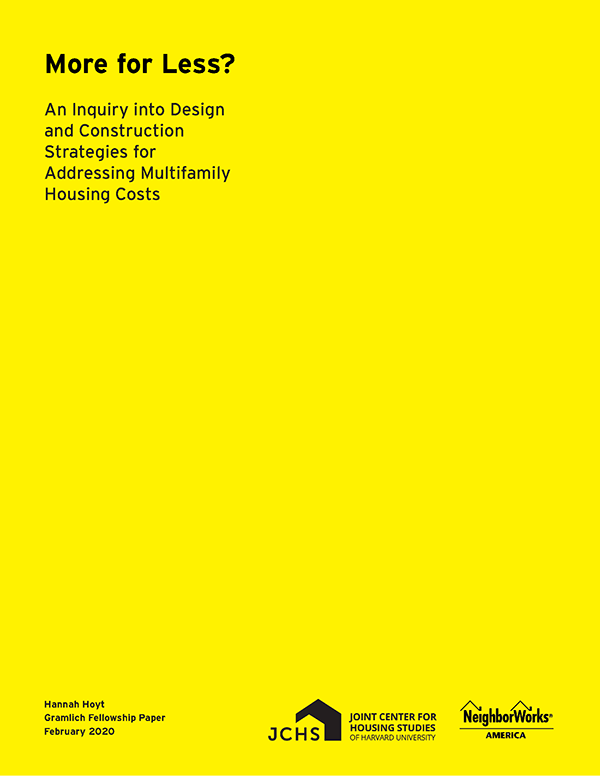More for Less? An Inquiry into Design and Construction Strategies for Addressing Multifamily Housing Costs
Demand for multifamily housing, especially affordable and middle-income rental housing, is rising as the nation continues to add new households. However, overall housing production remains below needed levels given household growth. Many new multifamily units are renting at prices that are prohibitive for middle- and low-income renters. The need for more affordable multifamily housing is clear, but developers, architects and contractors face rising construction and land costs as they build multifamily housing.
As a 2019 Gramlich Fellow in Community and Economic Development, Hannah Hoyt carried over 30 interviews with developers, architects, contractors and policy makers, who described the challenges of increasing multifamily housing production. They noted the need for significant policy changes, from more federal support for housing, to local zoning changes to encourage housing production and job training programs to address labor shortages in the trades. However, they also acknowledged the slow pace of these policy changes. In practice, multifamily project teams often face significant budget gaps, scrambling to reduce costs while still building quality housing.
Given that persistent challenge, this paper focuses on the design and construction decisions that are within the day-to-day control of the project team, asking: how can developers, architects and contractors address multifamily housing costs through design and construction decisions? Or, phrased differently, what are the limits or boundaries of cost reduction through design and construction decisions? What parts of the multifamily puzzle can only be addressed through policy or financing changes?
These multifamily experts shared strategies (and some experimental ideas) for addressing costs increases and anticipating cost challenges. These interviewees also shared cautionary tales, pointing out unpredictable parts of their projects and places where rash cost-cutting can compromise building quality or environmental performance.
Their strategies, organized by land costs, soft costs and hard costs, are not silver bullets but they aim to provide a starting point for project teams as they build high-quality, cost-efficient multifamily housing. These strategies focus on increasing the efficiency and predictability of multifamily construction with the aim of helping project teams identify cost savings that can be reinvested in their buildings or passed on to tenants. While the report focuses on strategies that developers, designers and construction firms can deploy in their current multifamily projects, it also notes how select municipal, state and federal policies impact multifamily project teams.

